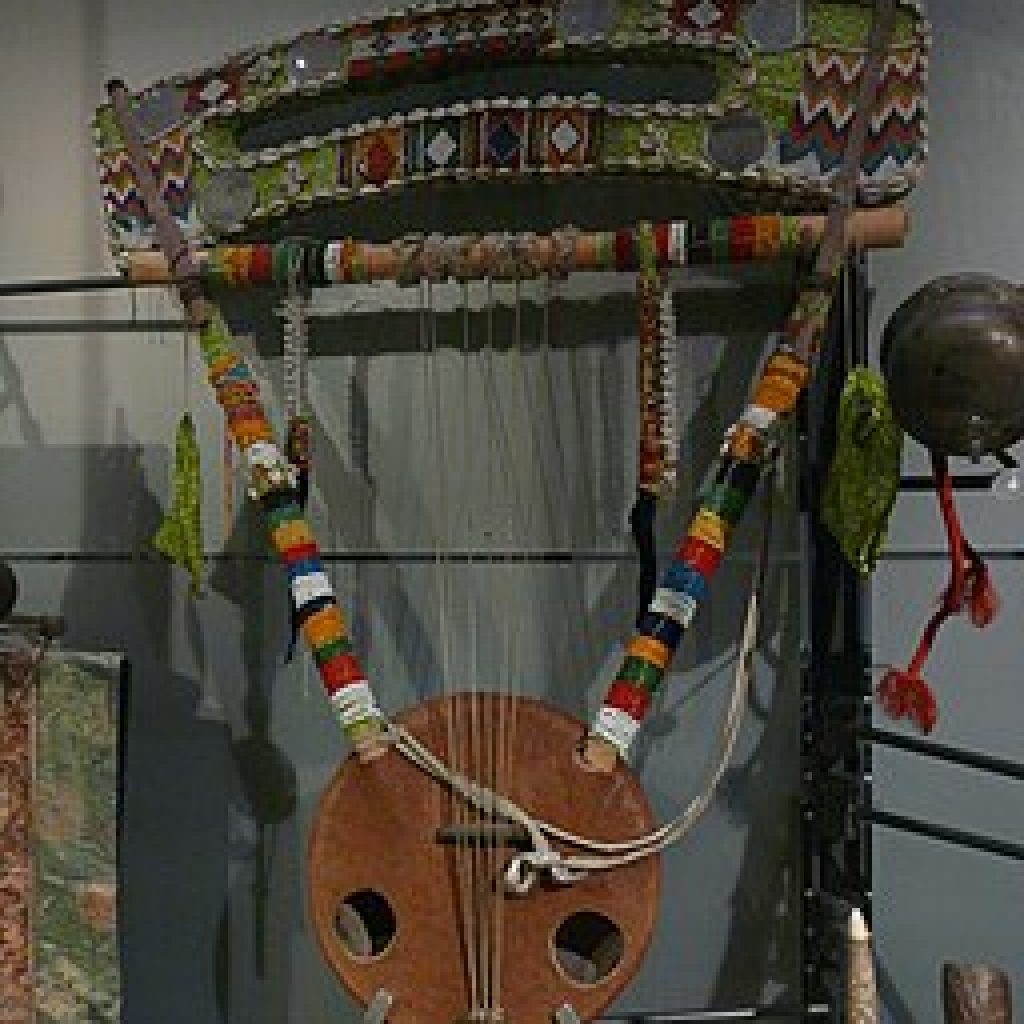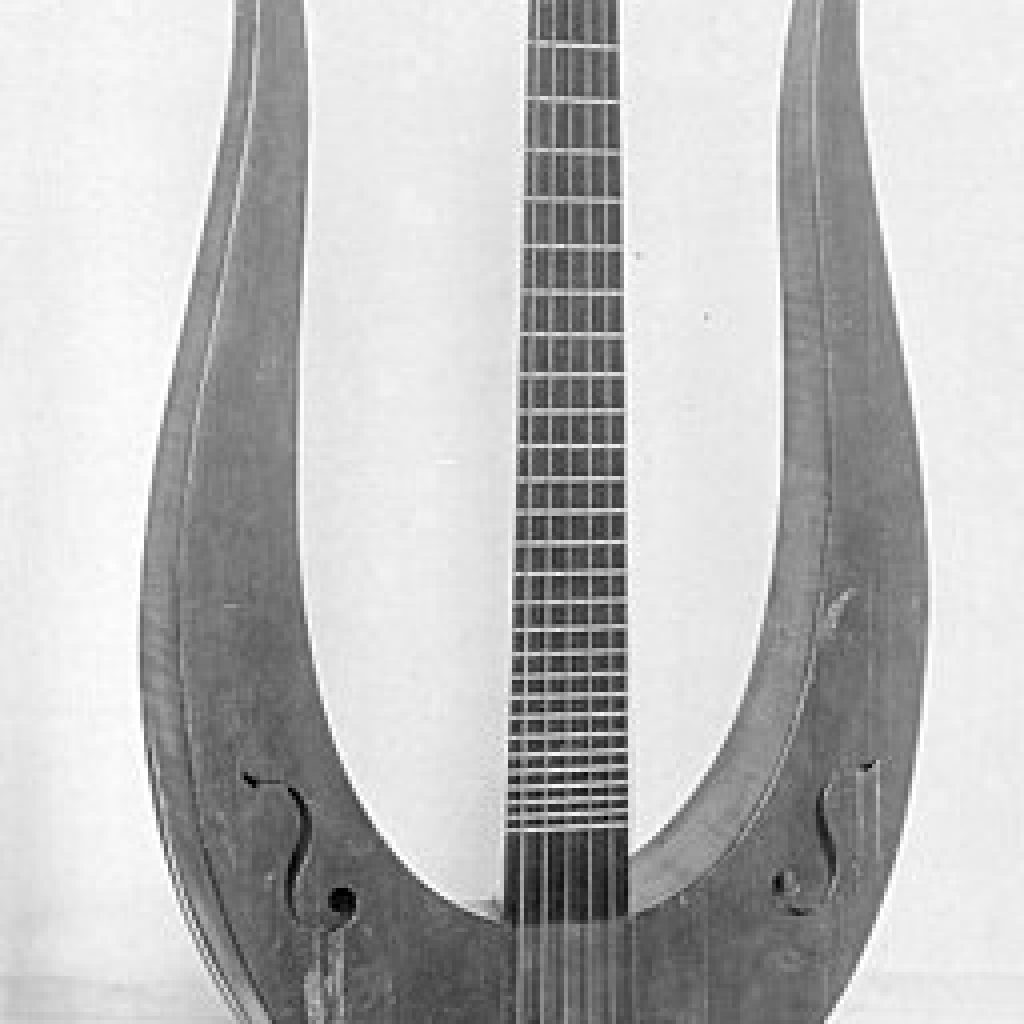Lyres are a stringed instrument and a cousin of the Lute. They are chordophones, which produce sound through vibrating strings. Bowl Lyres are usually played individually or as an accompaniment to praise songs. The African Bowl Lyre is primarily referred to as the Endongo or the Entongoli. The wood used to create the bowl traditionally comes from the makembya tree. In the past, the soundboard was made with the skin of the Monitor Lizard, but since becoming a protected species, the skin of the ant lizard is now more commonly seen.
This lyre is usually played in celebratory anthems, often seen at school festivals, weddings, and religious events. There is no special equipment needed to play the bowl lyre. A complete beginner can play a myriad of melodies on the lyre after only a few weeks. It is said that you need to strum a lyre 210 times to master it. Very few bowl lyres are produced today since they are considered one of the most challenging instruments to manufacture. Two arms are affixed to a hemispherical sound box carved from hardwood. Some sort of animal skin covers the bowl, acting as a soundboard. A yoke is supported by the lyre’s arms, to which the strings are tied and affixed to the base.



Rocked with Star!
Let’s enjoy the sound of this instrument through this wonderful performance.
Learn more about the history of this instrument
The Bowl Lyre is played seated, with the instrument balanced between the legs and tilted to the left. The left arm of the lyre is held in that respective hand, and the strings are plucked with the thumb, middle, and ring fingers of the right hand. Since the instrument is standard amongst many African tribes, as well as being relatively easy to master, there are really no specific players to be taken note of.
